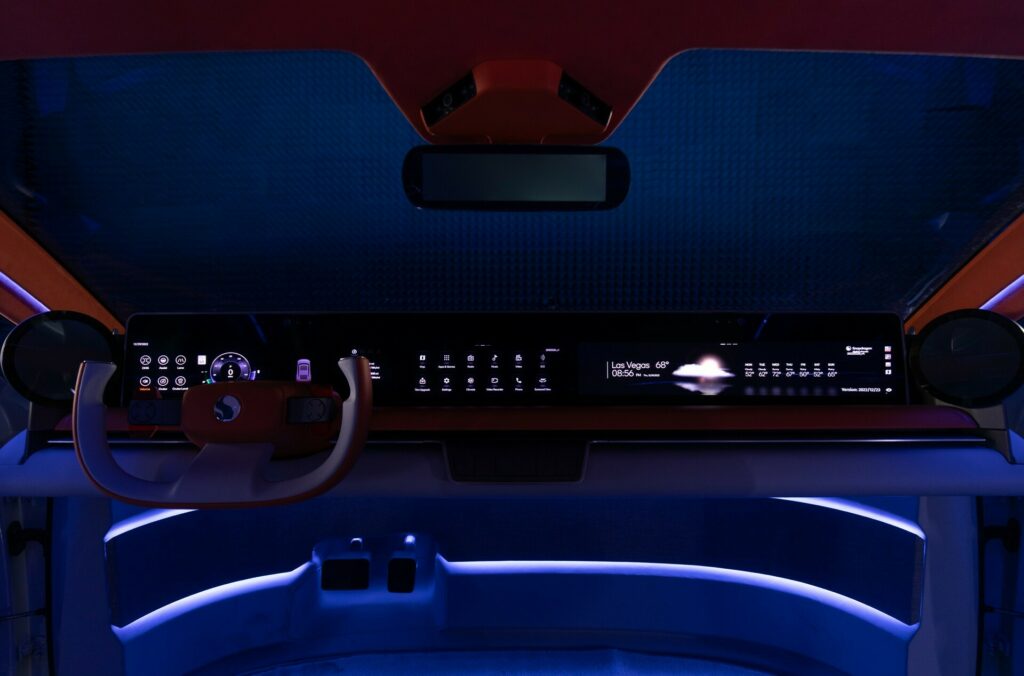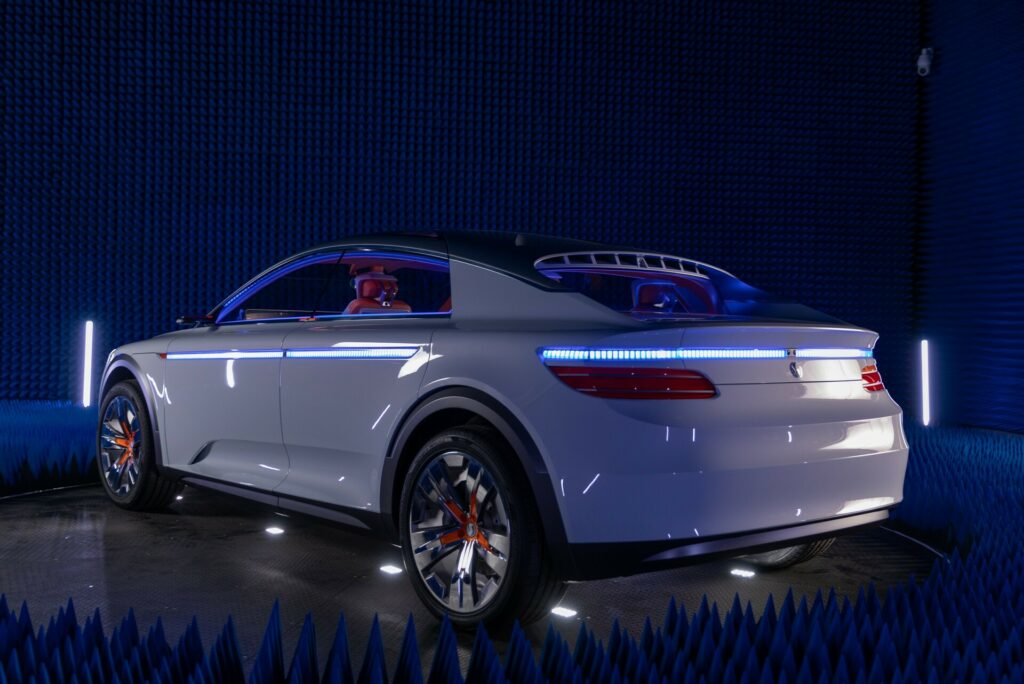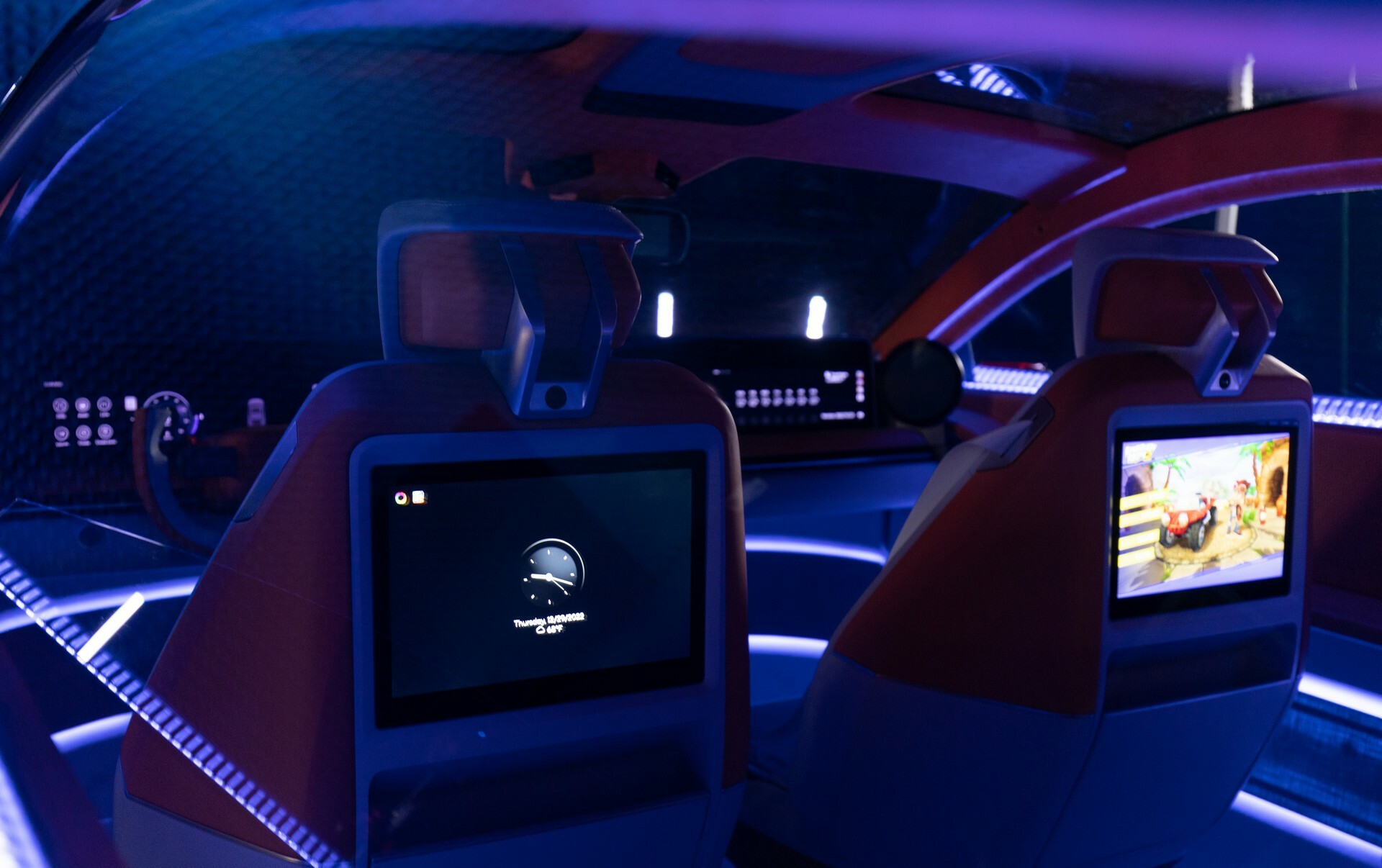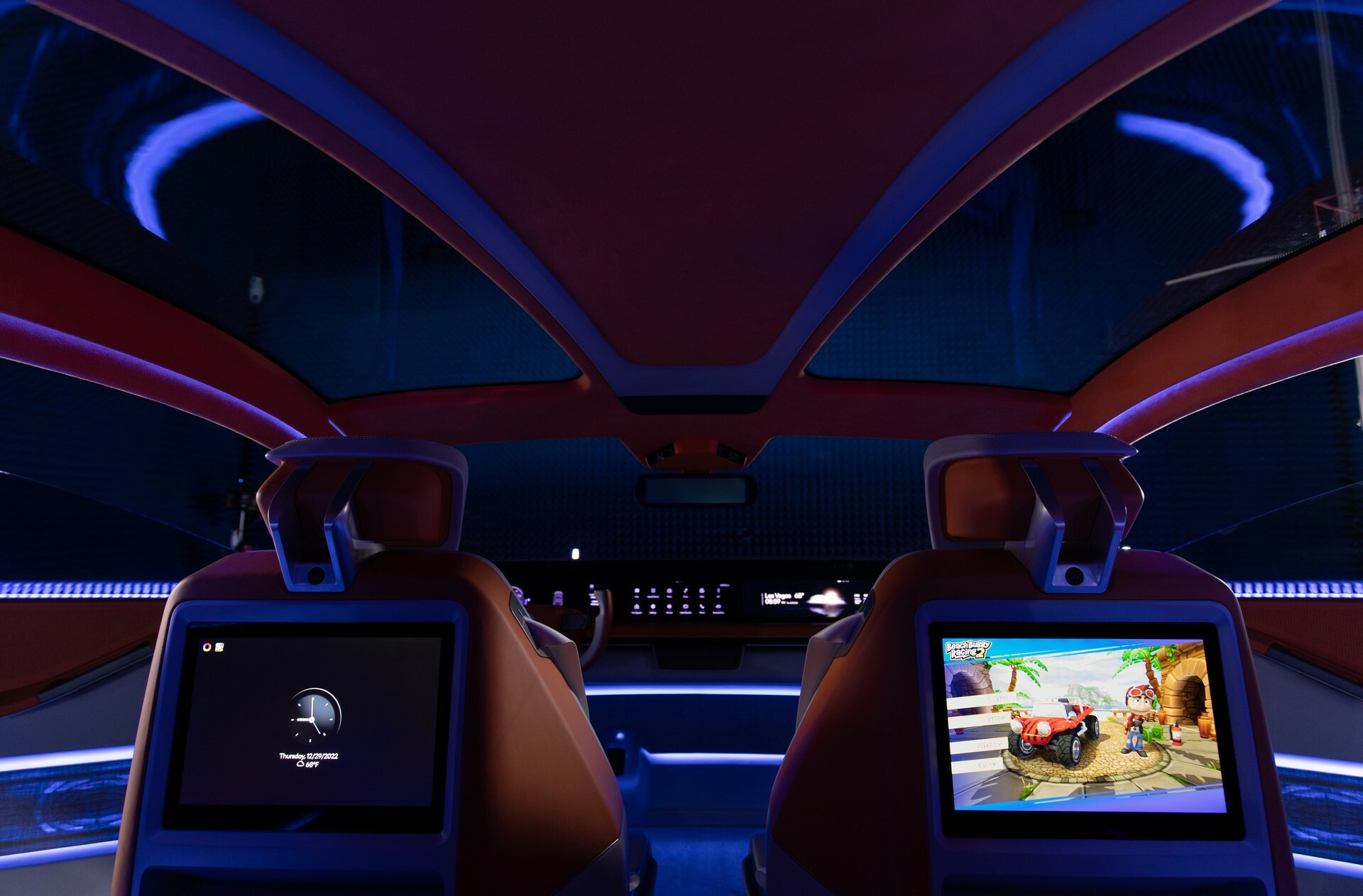Qualcomm is best-known for powering smartphones, but they’ve used CES to unveil the Snapdragon Digital Chassis concept.
Designed to show how automakers can leverage the company’s technology and services, the concept blurs the line between lifted sedan and crossover coupe. Regardless of what category it falls into, the concept is sure to turn heads as it sports a full-width front light bar and slender headlights.
Moving further back, we can see plastic body cladding, suicide rear doors, and a rakish windscreen that flows into a sloping roof. The concept also has light bars integrated into the doors and they can apparently change color.
Also: BMW Partners With Qualcomm And Arriver Software On Automated Driving Tech
The odd design continues at the rear with a flat deck lid, a nearly vertical rear window, and enclosed buttresses. They’re joined by slender taillights and yet another light bar.
While the concept isn’t what we would call beautiful, the exterior styling isn’t really the point. Instead, it’s all about the cabin which features a 55-inch pillar-to-pillar display for the driver and front passenger. It’s broken up into multiple sections and we can see an instrument cluster that is flanked by vehicle information and driver assistance settings. In the center is an infotainment system, while the front passenger can enjoy streaming content or online gaming.
That’s just the tip of the technology iceberg as the concept is outfitted with cameras that can recognize occupants and automatically adjust vehicle settings to their preferences. This includes the seating position and climate controls as well as recently used applications and preferred content on their respective screens.

The personal touches don’t end there as each passenger can customize their own audio zone, while also benefiting from active noise and echo cancellation. The concept also sports zonal call technology, which reduces noise from other areas of the vehicle during voice calls.
Other highlights include a virtual assistant with natural language voice control as well as facial recognition and biometric authentication for making purchases on the go. The latter are envisioned to include features, content, and services for the concept itself as well as more mundane things such as parking fees.
In the event of a crash, footage from around the vehicle can be recorded and stored to the cloud. This promises to simplify the “resolution process” as there will be video for drivers, law enforcement, and insurance companies to review. Of course, depending on who’s at fault, that might be a good or bad thing.

While the concept isn’t slated for production, Qualcomm said it showcases how “Snapdragon Digital Chassis solutions integrate technologies from a diverse ecosystem of companies to deliver experiences that are highly personalized and intuitive, including immersive infotainment, driver assistance, and enhanced safety.” The company went on to say that “With the Snapdragon Digital Chassis and Qualcomm Technologies’ horizontal connected services platform, Car-to-Cloud, automakers can scale these premium experiences across a wide range of vehicle tiers and personalize them for each occupant.”
Besides unveiling the concept, Qualcomm introduced the Snapdragon Ride Flex system-on-chip (SoC) that is slated to go into production next year. It’s designed to allow digital cockpit, advanced driver assistance systems, and automated driving functions to co-exist on a single SoC.












